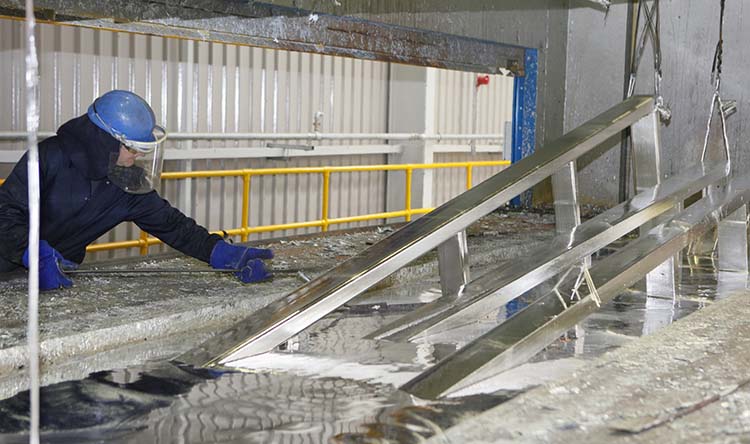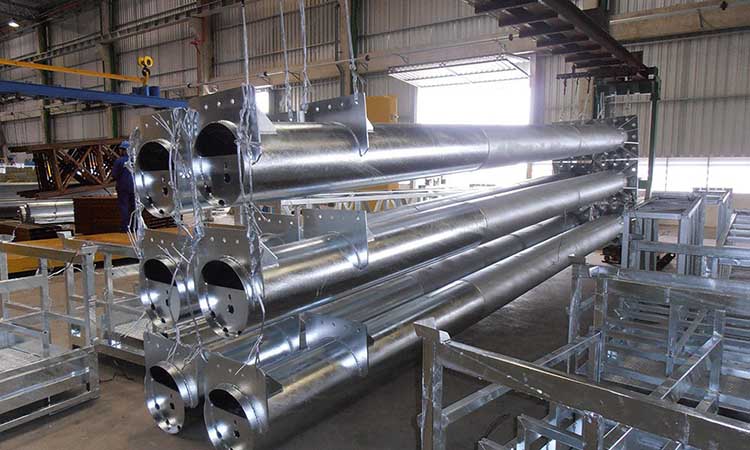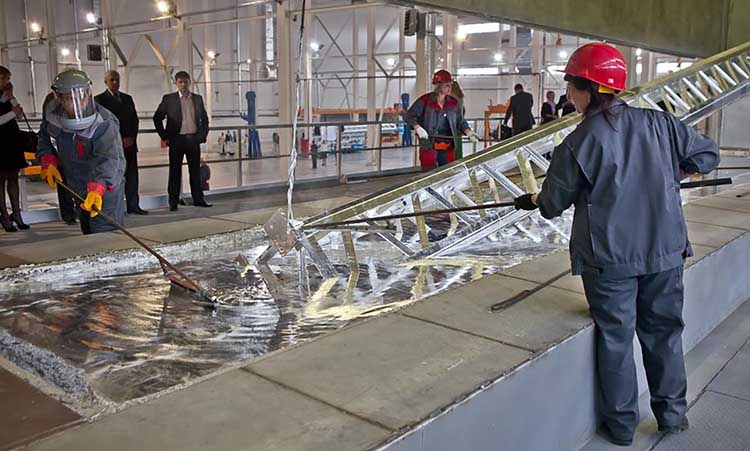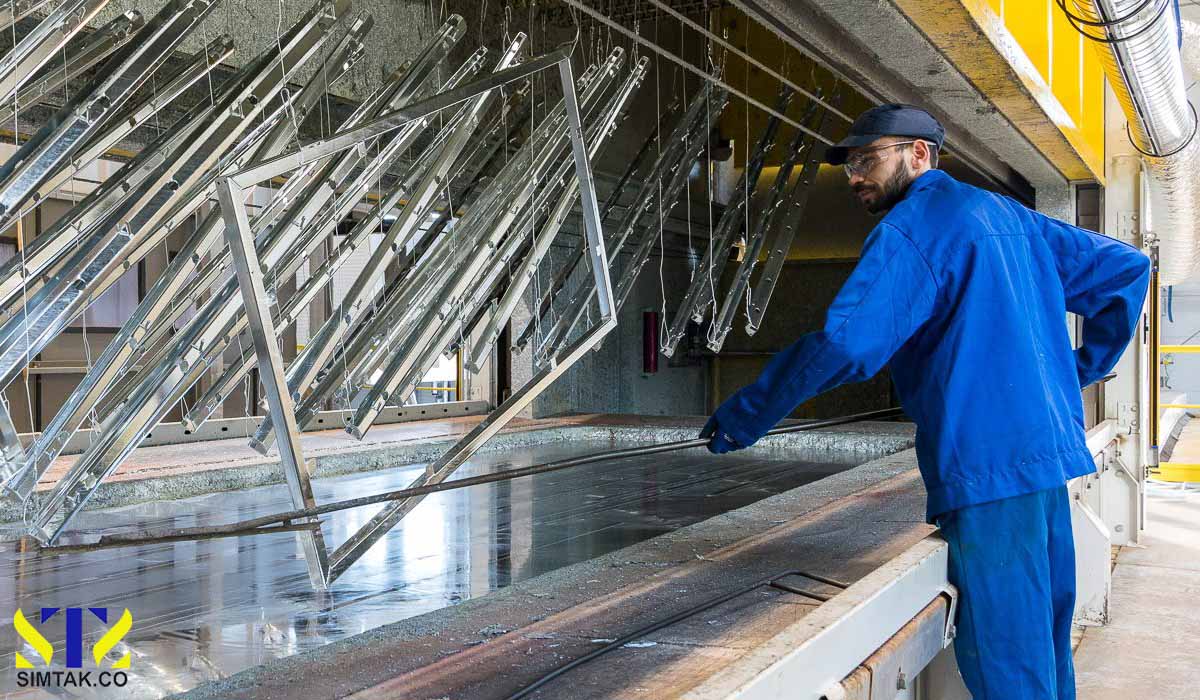Galvanized is considered a coating, and two processes, hot and cold galvanizing, are used to protect steel and iron against rust and corrosion. When iron metal comes into contact with water and oxygen, it rusts and degrades, as we have all witnessed countless times. For this reason, steel and iron are galvanized in several stages to prevent corrosion.
What is the distinction between cold and hot galvanizing?
Hot and cold galvanizing is used to prevent the oxidation of steel and iron, which rust when exposed to water and oxygen. It is required to galvanize steel in order to prolong its useful lifetime because steel is a metal that corrodes extremely quickly and is used to manufacture a variety of products. If this process is not performed on steel, corrosion is considered a defect, and the client will not purchase corroded steel.
Metals can be galvanized in both hot and cold conditions. Both galvanized models are developed for the same function; however, their capabilities differ. Continue with our examination of hot and cold galvanization.


( Other products of Sim Tak: Fence netting )
Hot Galvanized
In the process of hot galvanizing, iron and steel objects are submerged in a molten bath. This bath achieves a temperature of 449 degrees Celsius (840 degrees Fahrenheit), and its metal components, both internal and external, are coated with zinc. After removing the steel from the bath and exposing it to air, the zinc on the metal’s outer surface combines with oxygen in the air to generate zinc oxide.
In the interaction between zinc oxide and carbon dioxide, zinc carbonate is produced as a layer. This protective layer is applied to the surface of the steel to make it resistant to corrosion. In order for a metal to be hot-dip galvanized, the following procedures must be performed:
- Using chemicals, purge the surface of the steel of any contaminants such as paint, oil, etc.
- Removing the previous step’s chemicals from the steel’s surface.
- If the metal has an oxidized layer, remove it with an acid solution.
- Removing acidic substances from the surface of the metal from the previous step.
- Coating steel with zinc ammonium chloride is recommended.
- Immersing the steel in the zinc bath till this metal reaches the same temperature as zinc.
- Removing the steel from the zinc bath in order to perform the chemical reaction on it.
Cold Galvanized
The cold galvanizing method involves electrolysis and electric current. The structure of these colors contains 92-95 Z of zinc, which is a large amount. Cold galvanizing is merely a covering for the metal, and because it is not chemically connected to the metal, it cannot protect the metal against corrosion to any substantial degree.


( Other products of Sim Tak: Gabion Wire Mesh )
How to Spray
First, the surface of the metal is cleaned of any oil and dirt. Shake the spray for two to three minutes to ensure that the components are homogeneous, and then spray. The sprayed area will dry in 10 to 15 minutes, and you should repeat the final stage of spraying 8 hours later.
When zinc is applied chemically and with high heat on a metal’s surface, the metal becomes thicker and more resistant to corrosion, but it is also more expensive and used for massive constructions and heavy industries. However, the metal with a thin zinc coating on its surface is thin, has limited corrosion resistance, and is primarily utilized for small structures.
How is hot galvanization distinct from cold galvanization?
Now that you are acquainted with the process of galvanizing metals, you can investigate how to differentiate between hot and cold forms of this method.
There are generally two ways to distinguish between hot and cold types of galvanized wire. One is to use an electronic thickness gauge to measure the thickness of the zinc metal coating on the wire, and the other is to test the metal in competent laboratories to determine the type of galvanized. Due to the thickness of the galvanized coating on hot-dip galvanized wires, the underlying layers will not be harmed or decay if the metal is scratched.
The coating on the exterior of cold-galvanized wire is shiny and glossy. This coating has a low thickness, and a severe scratch on the surface of the metal will result in the rapid deterioration of the underlying layers.


Last Word
Our research led us to the conclusion that wire galvanization is an advantageous method for steel metal. as a result of being entirely insulated throughout the galvanization process. In addition to extending the life of the metal, this procedure is widely used in other sectors. Now, depending on the intended purpose of the wire, it can be cold- or hot-galvanized. The price of the wires can vary based on the type of galvanized metal, as well as its temperature and thickness. In addition, our advisors with Afra Sim Tek Sadid will assist you in acquiring any type of reinforcement wire.
Also read: What distinguishes hot galvanized wire from cold galvanized wire?





Which is better galvanized or hot-dipped galvanized?
hot-dipped galvanized, cause it provides much better corrosion resistance than electro galvanization because the zinc coating is typically 5 to 10 times thicker.